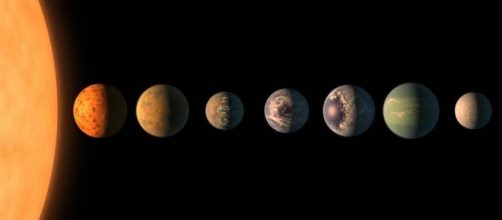Astronomers have discovered seven planets close to the size of Earth orbiting around a single Star, according to the National Aeronautics and Space Administration of the United States (NASA), reports BBC News online
According to the researchers, all seven planets might have water in liquid form on the surface. Three of them are located in the area which is traditionally considered "habitable" ,where life could be a possibility.
Trappist-1
The 7 exoplanets discovered are orbiting around a Star called Trappist-1, located 40 light years from Earth. Trappist-1 Star name is the acronym of the name of the Belgian telescope located in Chile "Transiting Planets and Planetesimals Small Telescope ".
In May last year, the astronomers using Trappist announced the discovery of three planets in this system. Spitzer orbital telescope, assisted by several ground based telescopes, including the Very Large Telescope of the European Southern Observatory, confirmed the existence of these planets and they discovered another four.
Could there be life on these planets?
Michaël Gillon, a Belgian researcher at the University of Liège, said these planets are located very close to each other and close to their Star, a situation similar to Jupiter's moons.
Gillon thinks that the star is so small and cold than the climate of the seven planets is tempered, which means that it may have certain amounts of liquid water and, by extension, perhaps even life.
Amaury H.M.J. Triaud ,an astronomer at Cambridge University and member of the research team thinks that scientists have made a crucial step towards finding out whether there is life there.
Press conference held by NASA
Wednesday, February 22th, NASA conducted a press conference for the announcement of the major discoveries of the 7 planets outside our Solar System
Are we alone in the Universe?
This amazing discovery may prove to be an important missing piece in the puzzle of the spread of life in the universe.
Thomas Zurbuchen, administrator of NASA's Science Mission Directorate from Washington Science Mission Directorate din Washington thinks the answer to the question whether we are alone in the Universe is one of the first priority of science. Zurbuchen said the discovery of a such a large number of planets located at the right distance to their star (suitable for life) is a remarkable step forward towards achieving this goal.

